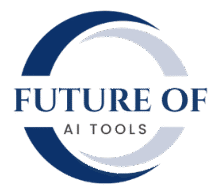AI tools are becoming part of our daily lives — from chatbots to design software, from virtual assistants to smart devices. But have you ever wondered how these tools actually work?
In this beginner’s guide, we’ll break down the basics of AI tools into 10 easy-to-understand points. Let’s dive in.
1. What Are AI Tools?
AI tools are computer programs that can think, learn, and make decisions — just like a human would. These tools are built using artificial intelligence to perform tasks like writing text, recognizing speech, generating images, or analyzing data.
- They are designed to reduce human effort and improve productivity.
- Common examples include ChatGPT, Midjourney, Grammarly, and Google Assistant.
2. Data is the Foundation of AI
AI tools learn and function using large sets of data. Just like a human learns from experience, an AI tool learns from the data it is given.
- The more data it has, the smarter and more accurate it becomes.
- For example, an AI trained on thousands of emails can write new ones with proper structure and tone.
3. Machine Learning (ML): The Core of AI
Most AI tools are based on Machine Learning, a process where machines learn from past data without being programmed again and again.
- The system identifies patterns in the data and uses them to make decisions.
- For example, a music recommendation app learns your taste by analyzing what you listen to.
4. Training an AI Model
Before AI tools are used publicly, developers must train them using datasets. This process involves feeding the AI examples so it can learn what to do in different situations.
- For instance, a chatbot is trained with thousands of conversations so it can understand what users ask and how to respond.
5. Neural Networks: The Brain of AI
Some advanced AI tools use neural networks, which are systems inspired by how the human brain works. These networks have layers that process information step-by-step.
- They help the AI understand language, images, sounds, and even emotions.
- This is used in tools like image editors, voice assistants, and chatbots.
6. Natural Language Processing (NLP)
NLP is the technology that allows AI to understand, interpret, and generate human language. It helps AI tools communicate in a way that feels natural and human-like.
- AI tools like ChatGPT, Grammarly, or Google Translate use NLP to read and write like humans.
- NLP powers everything from writing tools to customer service bots.
7. Computer Vision for Image Understanding
AI doesn’t just read text — it can also see and understand images using Computer Vision.
- Tools like facial recognition systems, object detection, and image creators rely on this.
- For example, an AI can detect whether an image contains a cat, tree, or human — all in seconds.
8. Real-Time Processing and Speed
Modern AI tools can process your input and give results almost instantly.
- Whether you’re using voice commands or AI-generated text, it works quickly using powerful cloud servers and smart algorithms.
- This real-time capability is what makes AI tools so useful in daily tasks.
9. Continuous Learning and Improvement
Many AI tools are designed to improve with use. They collect feedback, learn from users’ actions, and update themselves to give better results.
- For example, YouTube’s AI recommends better videos based on what you watch regularly.
- This makes AI tools more personalized and smarter over time.
10. Simple and User-Friendly Interfaces
You don’t need to be a tech expert to use AI tools. Most tools are designed with easy interfaces — like chat windows, buttons, or drag-and-drop panels.
- The complex AI processing happens in the background

